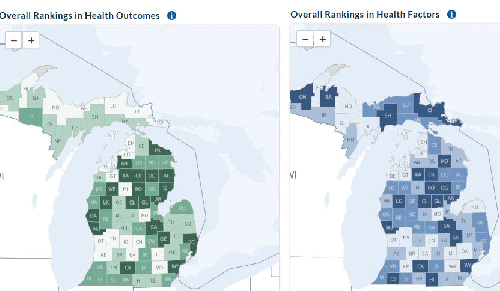How healthy is your county?
Using the County Health Rankings and Roadmaps to inspire action.
Our zip code can often tell us more about our health than our genetic code. The County Health Rankings & Roadmaps, a collaborative project between the University of Wisconsin’s Population Health Institute and the Robert Wood Johnson Foundation, released its annual rankings in March. The Rankings & Roadmaps helps identify and implement solutions that make it easier for people to be healthy where they live, learn, work and play.
The annual Rankings provide local-level data that shows how people from one county to another rank on a range of factors that determine health. Factors such as unemployment, quality of schools, air pollution diet and exercise are gathered from national and state sources. Rankings are encouraged to be used as a starting point for communities to assess health. A county’s rank tells a community how healthy it is for the present time, compared to other counties in its state.

Photo source: County Health Rankings and Roadmaps
Two sets of rankings are provided: health outcomes and health factors. Developers of the data suggest users think of the health outcomes (listed in green) as how healthy a county currently is and health factors (blue) as how healthy a county might be in the future.
The Roadmaps to Health Action provides guidance, tools and resources to move from data to action. Resources found within this section are meant to help answer two key questions, such as “What can I do?” and “What can I learn from others?” Tools within this section are meant to help bring communities together to learn about the factors influencing health in their area and make a plan to identify strategies for making sustained impact. Noted features include:
- Action Cycle: an outline of seven suggested key steps
- What Works for Health: a listing of evidence-based strategies to improve the factors that impact health
- Community Stories: descriptions of health successes from across the country
Take a few minutes to review the ranking for your county – how does it compare to others in the region or throughout Michigan? Who might be working to improve health in your community? Consider getting involved yourself.
Visit the Michigan State University Extension website for information on health, nutrition and chronic disease management and prevention.



 Print
Print Email
Email